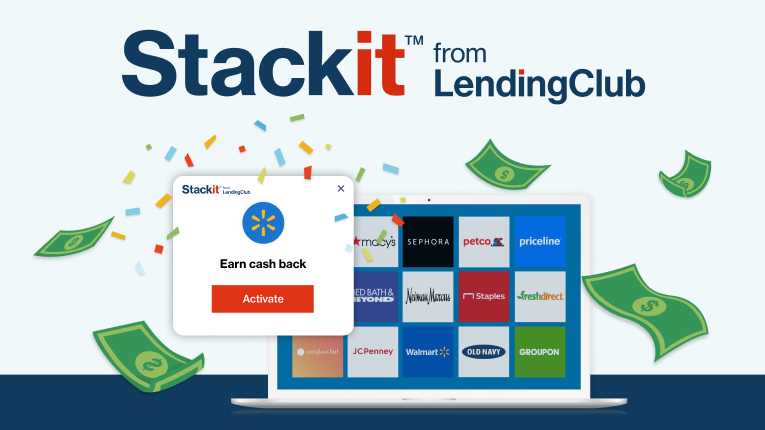Make These 6 Money Moves Before Quitting Your Job

Many people dream of quitting the 9 to 5 hustle. For some, the idea of going into business for themselves or taking a travel-sabbatical sounds exhilarating. Others may need to exit a toxic workplace before they’ve found a new job with a different employer. Whatever the reason for wanting to quit your job, if you’re like most, you’ll still have bills to pay.
Quitting your job without a plan for keeping up with your financial obligations could prove challenging without a regular paycheck, steady benefits, or a smart exit strategy. So, if you’re already plotting your resignation, here are six money moves to consider first—and well before you quit your job for good.
How to Get Your Finances Ready Before Quitting Your Job
The drop in income that usually comes with quitting a job can cause a lot of anxiety and fear. Along with reducing spending, increasing saving, and paying off debt, having an exit strategy can make the transition smoother.
1. Build up your emergency fund.
Experts recommend having three to six months of living expenses in emergency savings to cover surprise bills or ongoing costs if you’re out of work. If your essential expenses are roughly $3,000 per month, that would mean having at least $9,000 to $18,000 set aside in emergency savings before quitting your job. However, if you plan to have no income for longer than six months or want more of a financial buffer, setting aside even more is recommended. According to May 2023 data from the Bureau of Labor and Statistics, it’s been taking about five months on average for unemployed workers to find a new job. Saving up as much money as possible can provide a buffer in case it takes you longer than expected.
2. Create a bare-bones budget.
A bare-bones budget means cutting your spending down to the bare minimum—covering only the most basic, necessary expenses—with minimal to no discretionary spending. Bare-bones budgets are very restrictive, so they’re typically used only as a temporary measure (not as a long-term budget plan) to dramatically reduce spending. Cutting back to just the basics for a few months (or more) before quitting your job can help you build savings faster and help your savings last longer once you decide to leave.
Start building a bare-bones budget by isolating your necessary expenses from your other spending. Your credit card and bank statements can help you quickly identify and highlight those transactions. Basic expenses generally will include items such as rent or mortgage payments, utilities, health insurance, groceries for meals cooked at home, childcare, minimum debt payments, and basic transportation. Once you’ve identified your necessary expenses, it’s much easier to decide what expenses should be cut.
Ordinarily, it makes sense to budget for things you want or enjoy, such as concerts, dining out, or streaming services. But when you’re reducing your spending to save as much money as you possibly can before quitting your job, every penny counts. Contributions to a retirement plan should remain a priority, however, this may mean temporarily reducing the amount you set aside each month.
3. Consider your options for medical insurance.
Once you quit your job, you’ll continue to need medical coverage in the event of injury or illness. COBRA allows you to continue coverage (usually for up to 18 months) after you leave your employer. You can also buy an Affordable Care Act (ACA) plan through a public exchange or the health insurance marketplace. Or switching to your spouse or partner’s plan may be a possibility. When it comes to cost, marketplace plans are usually more favorable, however, COBRA has no pre-existing medical conditions clause that would prevent you from receiving treatment. If you’re under age 26 you may be able to get coverage under your parent’s health insurance plan.
4. Consolidate high-interest debt.
Well before you decide to leave your job, plan for how you’ll continue paying off debt, such as credit cards and student loans. For example, while you’re still employed, you might consider taking out a fixed-rate personal loan to consolidate multiple high-interest credit cards into one single monthly payment. Consolidating at a lower interest rate than you’re paying on all those cards combined could reduce your overall cost of borrowing.
After you leave your job, in some instances student loan borrowers may be able to pause payments with a deferment or hardship forbearance during an employment gap, depending on whether you have a federal or private student loan. Check with your lender if you think you may have trouble repaying your student loans. Generally, for federal loans, you must be receiving unemployment benefits or actively seeking work to get an unemployment deferment. Also, interest may still accrue even with payments suspended, increasing your balance. Making interest-only payments during deferment or forbearance can prevent your loan balance from growing.
5. Decide what to do with your 401(k).
If you have a 401(k) or other employer-sponsored retirement plan, log into your account to review your balance and other details that may require attention. For example:
Will you need to do an IRA rollover? Typically, you can keep your 401(k) with your former employer, roll it over into an IRA, or cash out the account when you leave your job (though cashing out may result in a substantial tax penalty). Rolling the funds into an IRA is usually best to avoid penalties. Be sure to compare the fees from your existing plan versus an IRA and make a cost-effective choice.
Did you borrow money from your 401(k)? While some employer plans may allow you to continue making installment payments on a 401(k) loan, others may expect immediate repayment when you leave. If you don’t repay what is owed according to your employer plan, it could result in an unexpected tax bill.
If you leave your retirement savings with your employer, just don’t forget about it. A 2023 study found that there are an estimated 29.2 million “forgotten” 401(k)s representing $1.65 trillion in assets. Even if your account is small, it’s worth keeping an eye on given the potential long-term growth you could see from those returns.
6. Start your new business (or job search) while still employed.
A common exit strategy is to stay at your current job to keep a steady income flow until you’ve either received a new offer from another employer or are truly ready to launch out on your own. If you’re not anxious about making your rent or mortgage payment, you’ll be able to focus your attention on what is important, such as making sure your idea is viable, pricing your services, or taking your time to interview potential new employers. It will also give you time to prepare for whatever comes next: opening a business bank account, setting up bookkeeping and tax software, creating a go-to-market plan, or obtaining a certification.
The Bottom Line
Quitting a job before lining up another one was once considered taboo. Ultimately, it’s a personal decision, and depending on the circumstances, it could be the right one for you. If you want to plan for what to do before quitting your job, the steps above can help get your money in order before you make a move. With enough savings in the bank, debt and expenses under control, and an exit strategy in place before you say goodbye, you’ll have more peace of mind whenever you finally do decide to quit.
You May Also Like












